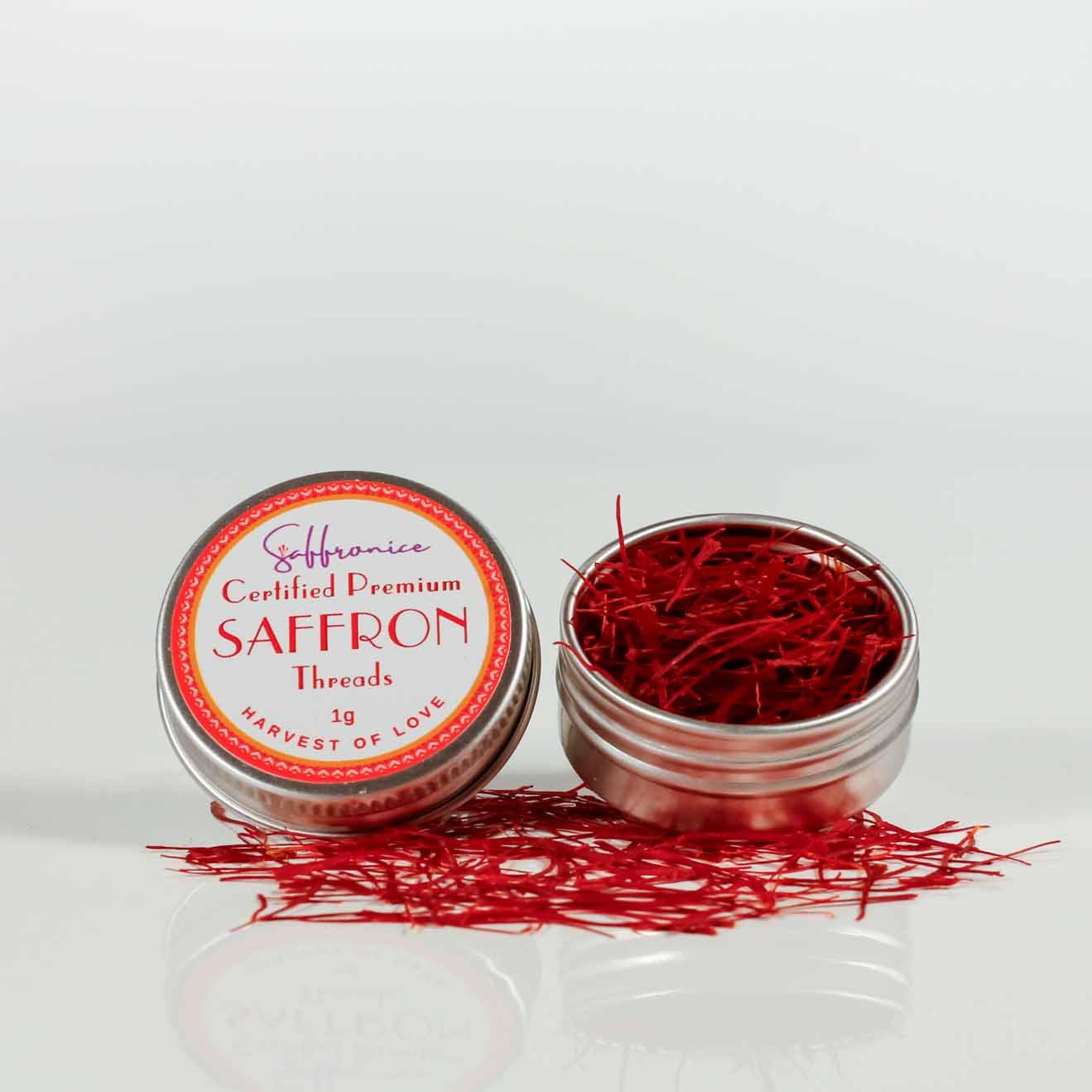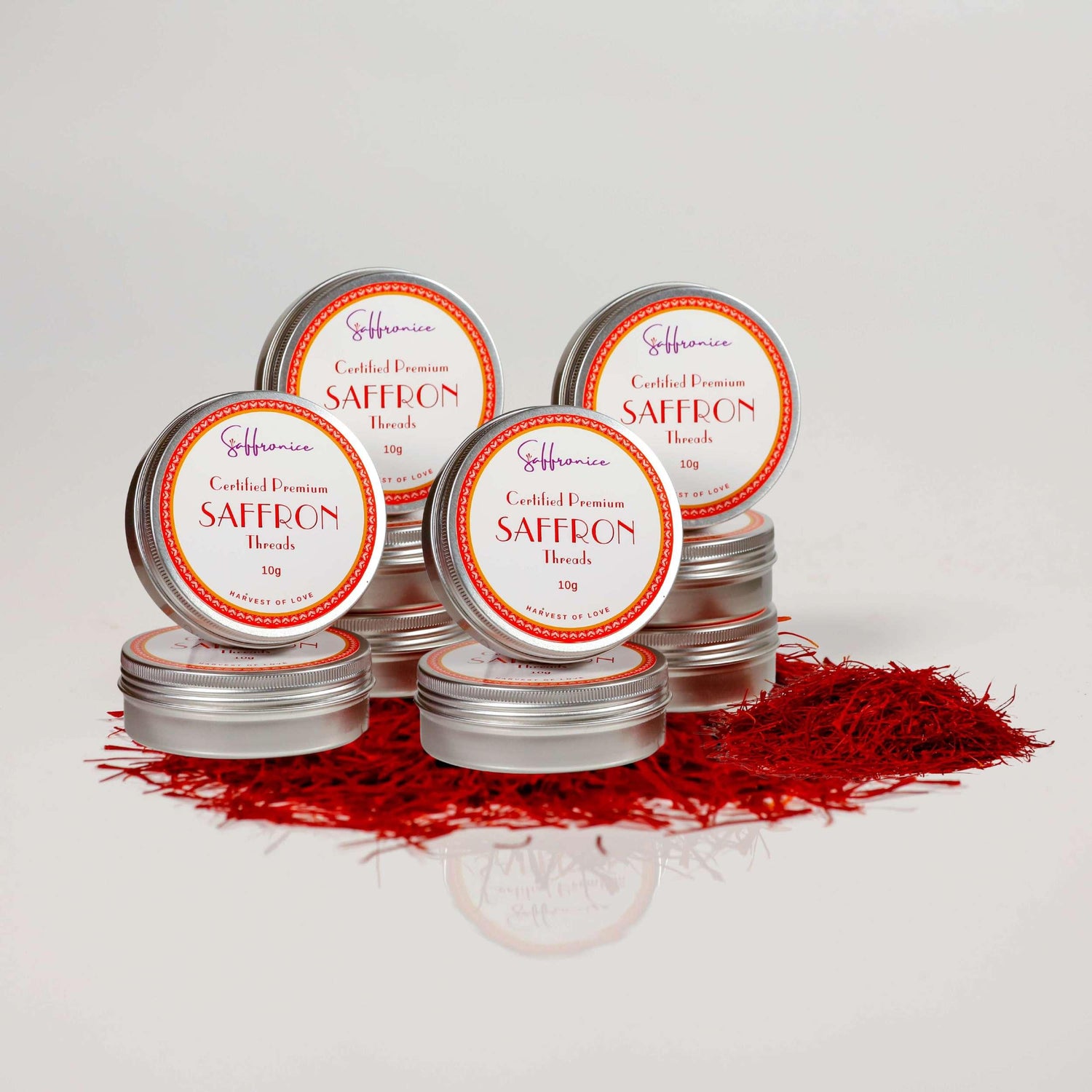Saffron is called "red gold" for its unique flavor, bright color, and scent. It comes from the Crocus sativus flower. Each flower has only three stigmas, making saffron very rare and expensive.
This article will dive into saffron's special qualities. We'll see how it's used in different cuisines around the world. Chefs can use saffron's color to make their dishes stand out.
Key Takeaways
- Saffron is a highly prized spice known for its distinct flavor, vibrant color, and aromatic properties.
- Saffron is derived from the Crocus sativus flower, with each flower producing only three stigmas, making it one of the rarest and most expensive spices by weight.
- Saffron's unique qualities and versatile use in global cuisines, such as Persian, Spanish, and Indian dishes, make it a valuable ingredient for chefs to master.
- Chefs can leverage the power of saffron's vibrant color to elevate the visual appeal and flavor profile of their culinary creations.
- Understanding the proper techniques for using saffron, such as infusing it in liquids or toasting the threads, is crucial for unlocking its full potential in the kitchen.

What is Saffron?
Saffron is a unique spice made from the dried stigmas of the Crocus sativus flower, also known as the saffron crocus. These stigmas are long and deep red, sometimes with orange and yellow near the base. The saffron crocus plant is special because each flower only has three of these valuable stigmas. This makes saffron one of the rarest and most expensive spices globally.
The Saffron Crocus Plant & Harvesting Process
The saffron crocus grows mainly in Iran but is also found in Spain, France, Italy, and parts of India. The flowers bloom in the fall. Harvesting saffron is hard work. Each flower must be picked by hand early in the morning when it's fully open.
It takes about 75,000 blossoms to get just one pound of saffron. This rarity makes it very valuable. After picking, the stigmas are dried carefully. This process makes their flavor and color even more intense.
Saffron has 0.5 to 1 percent essential oil, with picrocrocin being the main component. The coloring matter in saffron is crocin, which gives it its golden color.
"Saffron has been used as a golden-colored water-soluble fabric dye in ancient India, and for royal garments in various cultures throughout history."

The Unique Flavor Profile of Saffron
Saffron, the world's most expensive spice, has a unique and captivating flavor. It is often described as earthy, floral, and slightly sweet. This spice adds a complex depth to any dish it's in.
The earthy notes give a warm, rich base. The floral undertones add sophistication. The subtle sweetness balances and enhances other flavors.
Understanding Saffron's Flavor
Saffron's flavor comes from its chemical makeup. The crocin compound gives it a vibrant yellow-orange color and complex taste. The safranal is key to its floral scent, enhancing the flavor.
The picrocrocin adds bitterness, balancing the sweetness. This creates a well-rounded taste.
Contribution to Dishes
Saffron's flavor is essential in many dishes worldwide. In Spanish paella, it complements seafood and spices. It creates a cohesive taste.
In Italian risotto alla Milanese, saffron adds a golden hue and intricate flavor. It elevates the creamy texture. Even in desserts like the Indian gulab jamun, saffron's floral notes pair well with sweetness.

Using Saffron in Cooking: Methods and Guidelines
To use saffron in your cooking, you have two main saffron infusion methods. The first is to steep saffron threads in warm liquid. This can be water, milk, or broth, heated to 160-170°F for 15 minutes. This method extracts the best flavor and color.
The second method is to grind the saffron threads into a fine powder. Use a mortar and pestle for this. It helps break down the threads more efficiently.
Step-by-Step Guide to Steeping Saffron
Here's how to steep saffron:
- Start with 2-3 saffron threads per serving.
- Heat your chosen liquid to 160-170°F.
- Add the saffron threads to the warm liquid and let it steep for 15 minutes.
- Then, add the infused liquid to your dish during cooking.
Recommended Dishes
Some dishes really shine with saffron's unique flavor and color. Risottos, like Risotto alla Milanese, get a boost from saffron. Soups also gain from saffron's aroma. And paellas, the famous Spanish dish, need saffron for their authentic taste.
Tips for Balanced Flavor
When cooking with saffron, use it moderately. Too much can overpower other flavors. To get a balanced flavor, mix saffron with complementary spices like cinnamon and cardamom. This creates a harmonious taste. Follow these tips to enjoy saffron's full flavor while keeping your dish balanced.

Saffron Color in Culinary Arts
Saffron is celebrated for its vibrant, golden-orange color. This color can change the look of any dish. The high concentration of carotenoids in saffron threads adds to its beauty and flavor.
Saffron's color is key in many dishes. It makes Risotto alla Milanese golden and paella vibrant. This spice is a must-have in many cuisines.
Saffron's color is versatile in cooking. It adds warmth and elegance to many dishes. Whether it's a seafood risotto, pilaf, or dessert, saffron makes them stunning.
Saffron's impact on dish appearance is unmatched. It makes the final presentation captivating. It's a feast for the eyes and senses.
"Saffron is the most precious spice in the world, and its golden-orange hue is the key to its allure in the culinary arts."
Saffron's color has been prized for centuries. It adds luxury and grandeur to dishes. Adding saffron can make your cooking more beautiful and sophisticated.

How Much Saffron Should You Use?
Using saffron wisely is key. This spice has a strong flavor and can make dishes bright and colorful. A little saffron can change the taste and look of a dish a lot. For rice dishes, use about 8-12 saffron threads per pot. This means 2-3 threads per serving.
In soups and stews, 4-6 saffron threads per quart of liquid is enough. It adds a unique saffron smell and color. For desserts, 5-7 threads are enough to add a hint of saffron's special flavor.
By using these saffron usage guidelines and recommended saffron quantities, you can get the right flavor. Remember, a little saffron goes a long way.
"Saffron is one of the most valuable spices globally due to its delicate flavor and vivid golden color. Each saffron bloom only contains three stigmas that must be hand-plucked, making it a labor-intensive spice to produce."
- For rice dishes, use 8-12 saffron threads per pot (2-3 threads per serving).
- For soups and stews, incorporate 4-6 saffron threads per quart of liquid.
- When adding saffron to desserts, use 5-7 threads to infuse the sweets.
Following these saffron usage guidelines and recommended saffron quantities helps you balance the spice's power. This way, your dishes will have the right mix of flavors.

Sourcing High-Quality Saffron Threads
When picking saffron for cooking, it's important to choose high-quality saffron threads. Look for threads that are a deep red color with orange tips. They should be free of dullness, breakage, or yellow stamens. The aroma should be potent, smelling like hay and honey, with a slightly bitter taste.
Make sure to buy from reputable saffron suppliers. They should tell you about where the saffron comes from and how it's harvested. Look for ISO 3632 certifications to ensure it's pure and of high quality. About 90% of customers are happy with the quality of their saffron, praising its aroma and color.
"The saffron threads I received were simply exquisite – the vibrant red color and the captivating floral aroma elevated my dishes to a whole new level. I can't imagine cooking without this premium ingredient."
If you want to add the special saffron aroma and taste to your dishes, find a good supplier. With the right high-quality saffron, your cooking will reach new levels of flavor and elegance.

Exploring Culinary Delights with Saffron: Recipes to Try!
Saffron adds a unique flavor to dishes like Risotto alla Milanese and Paella. These are beloved in Italian and Spanish cooking. In Risotto alla Milanese, saffron is soaked in broth and mixed with Arborio rice. This makes the rice a vibrant yellow and adds depth of flavor.
In Paella, saffron gives the dish its golden color. It also adds a special aroma and taste to the seafood, meats, and vegetables. These recipes show how saffron can make simple ingredients into something amazing.
Classic Dishes Featuring Saffron: Risotto alla Milanese and Paella Recipes
To make Risotto alla Milanese, soak a pinch of saffron in warm broth for 10 minutes. This lets the color and flavor of the saffron mix into the broth. Then, add the saffron broth to Arborio rice, stirring until it's creamy and tender.
For Paella, saffron is crucial for its golden color and taste. Steep the saffron in hot liquid for at least 10 minutes. Then, mix it with rice, seafood, meats, and vegetables for a memorable meal.
"Saffron's subtle yet distinctive flavors pair exceptionally well with rice dishes, elevating them into extraordinary culinary experiences."
Adding saffron to Risotto alla Milanese or Paella takes your taste buds on a journey. Try these classic saffron recipes and discover a world of flavors!
Conclusion
Saffron is a key ingredient in cooking because of its bright color, complex taste, and smell. It makes classic dishes like Risotto alla Milanese and Paella even better. It also changes the look and taste of many recipes, showing its versatility and value.
By learning how to use saffron right, chefs and home cooks can make amazing dishes. They can add flavor and sophistication to their food.
The saffron in culinary arts has been loved for thousands of years. It's rare and hard to get, making it special. It's also important in many religions and cultures, showing its wide appeal.
Saffron's unique properties and impact on cooking keep chefs and food lovers interested. It encourages them to try new things and use its full potential.
As we finish our look at saffron's culinary arts, it's clear it's a must-have for any cook. Using saffron's special qualities can make dishes more flavorful, beautiful, and meaningful.
FAQ
What is saffron?
Saffron comes from the dried stigmas of the Crocus sativus flower, also known as the saffron crocus. Each flower has only three stigmas. This makes saffron rare and very expensive.
What is the unique flavor profile of saffron?
Saffron tastes earthy, floral, and slightly sweet. Its earthy notes give a warm, rich flavor. The floral undertones add sophistication. The sweetness balances and enhances other flavors.
How can saffron be used in cooking?
You can use saffron in two ways: steeping or grinding. Steeping involves soaking the threads in warm liquid. Grinding turns them into a fine powder. Use 2-3 threads per serving and steep for 15 minutes before adding to your dish.
What dishes are particularly enhanced by saffron?
Saffron is key in many classic dishes. It's essential in risottos, soups, and Spanish paella. Its flavor and color make these dishes special.
How much saffron should be used in cooking?
Use saffron sparingly. For rice dishes, use 8-12 threads per pot. For soups and stews, 4-6 threads per quart is enough. In desserts, add 5-7 threads for the saffron aroma and color.
How can you ensure you're purchasing high-quality saffron?
Look for deep red threads with orange tips. They should be free of dullness, breakage, or yellow stamens. The aroma should be strong, like hay and honey. Buy from trusted suppliers who provide detailed information and ISO 3632 certifications.




























